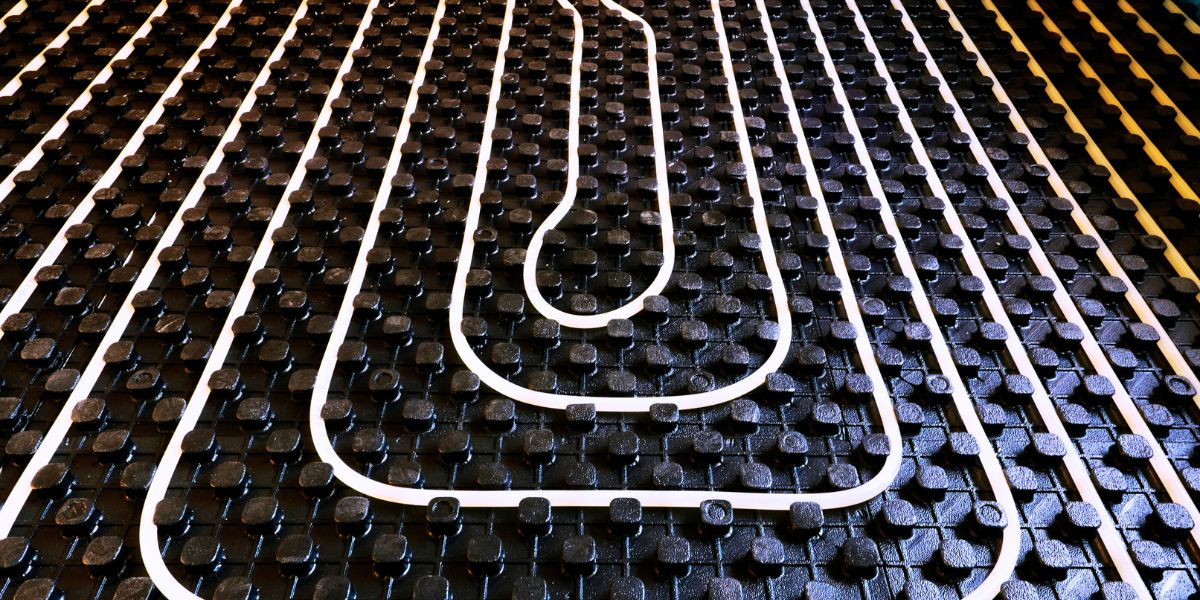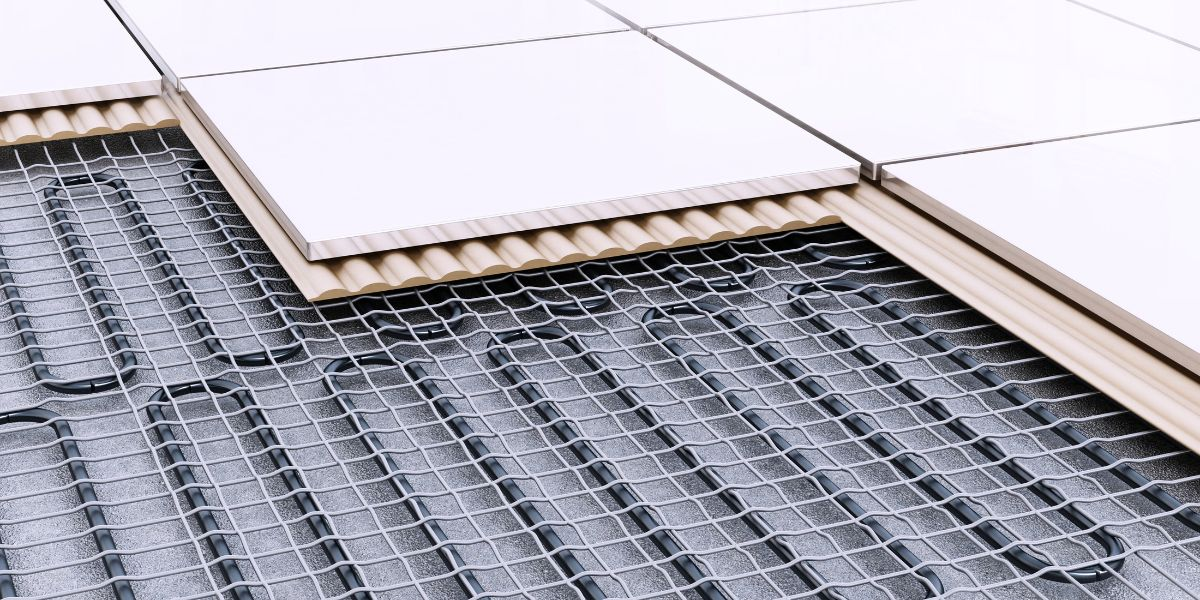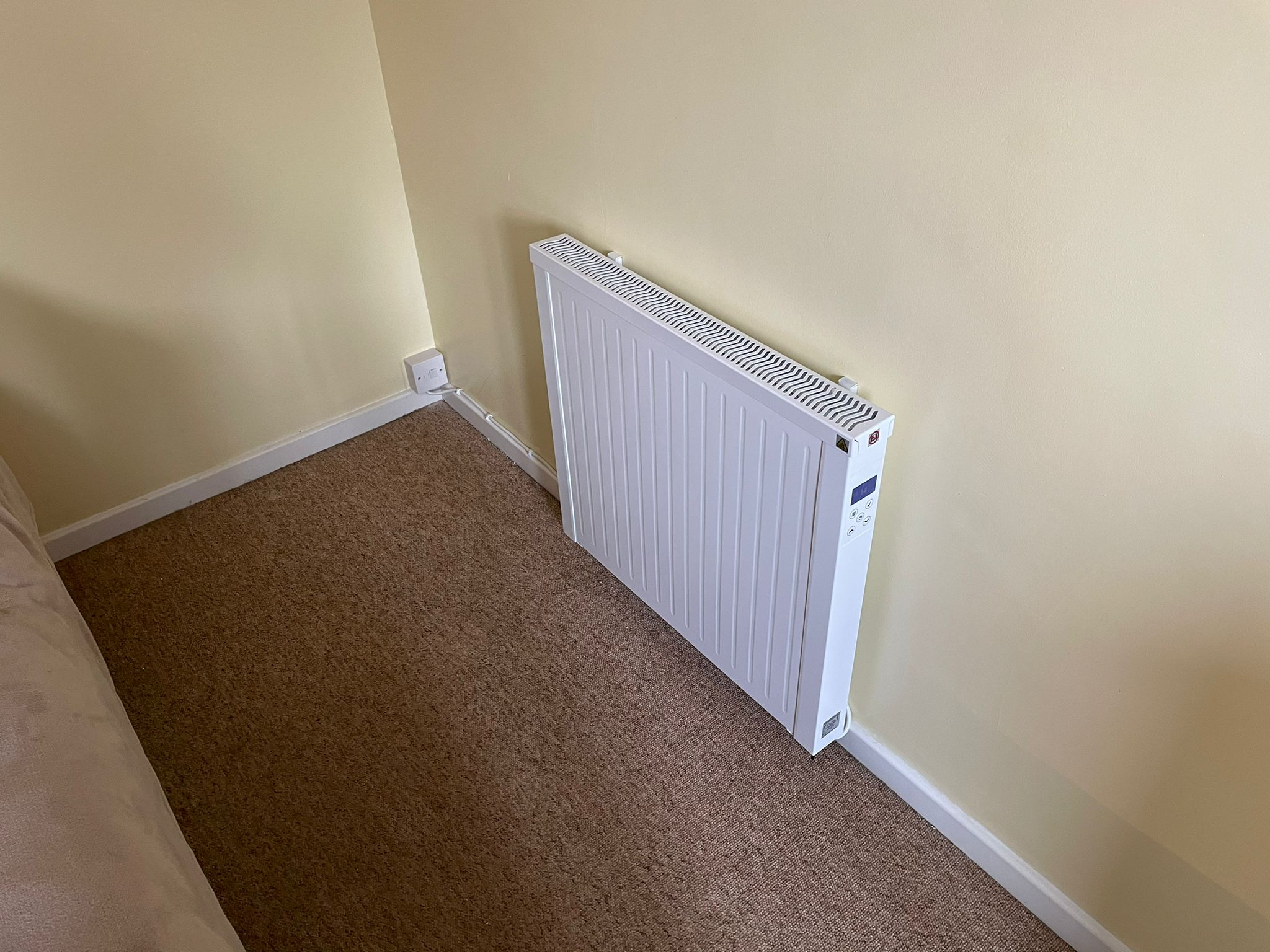
Underfloor Heating vs Electric Radiators: What's Best for Your Home?
Heating systems play a crucial role in maintaining a comfortable living environment in our homes. With numerous options available, deciding between underfloor heating and electric radiators can be a daunting task. In this comprehensive article, we’ll explore the advantages and disadvantages of both systems, discuss the key factors to consider when making your home heating system decision, and ultimately explain why the NEOS electric radiator system from Trust Electric Heating could be the perfect solution for your home.

Underfloor Heating
Description and functionality
Underfloor heating systems can be divided into two categories: electric and hydronic. Electric systems use heating cables or mats embedded in the floor, for heat output while hydronic systems circulate warm water through a network of pipes and floor insulation. Both types offer a comfortable and even heat distribution across your living space, resulting in a cosy and pleasant atmosphere.
Advantages of underfloor heating
- Energy efficiency: Underfloor heating systems typically operate at a lower temperature compared to traditional radiators, which translates to lower energy consumption and reduced utility bills. This makes them an eco-friendly and cost-effective option in the long run.
- Comfort and even heat distribution: The radiant heat emitted from the floor provides a consistent temperature and increased comfort, eliminating cold spots commonly experienced with traditional radiators.
- Space-saving and aesthetics: With no visible radiators, underfloor heating allows for greater design flexibility and a cleaner look, enhancing the overall appeal of your living spaces.
- Reduced allergens and noise levels: Underfloor heating systems produce less airborne dust and operate silently, contributing to a healthier and quieter home environment.
Disadvantages of underfloor heating
- Installation costs and complexity: Both electric and hydronic underfloor heating systems can be expensive and complicated to install, particularly in existing properties. This factor may discourage some homeowners from choosing this option.
- Limited compatibility with certain floor types: Some flooring materials, such as thick carpets, may not be suitable for underfloor heating due to their insulating properties.
- Longer heat-up times: Underfloor heating systems may take longer to warm up compared to traditional radiators, which could be a drawback for those who require rapid temperature adjustments and lower running costs.

Ideal scenarios for underfloor heating
Underfloor heating is a popular and efficient way of heating your home. It works by circulating warm water or electric cables under the floor surface, creating a comfortable and consistent temperature throughout the whole house or room. But what are the ideal scenarios for underfloor heating? Here are some examples:
- New-build properties or major renovation projects: Underfloor heating is easier to install when the floors are being laid or replaced, as it requires some modifications to the floor structure and insulation. It can also save space and reduce clutter by eliminating the need for radiators or other heating devices.
- Open-plan living spaces and rooms with large windows: Underfloor heating can provide even heat distribution across large areas, avoiding cold spots or draughts. It can also enhance the aesthetic appeal of open-plan designs and rooms with floor-to-ceiling windows, as it does not interfere with the view or the furniture layout.
- Bathrooms and kitchens: Underfloor heating can create a cosy and luxurious feel in bathrooms and kitchens, where tiled or stone floors can otherwise feel cold and unwelcoming. It can also help prevent dampness and mould by drying the floor quickly after use.
NEOS Electric Radiators
Description and functionality
Electric radiators come in two main types: convection and radiant. Convection radiators heat the surrounding air, while Radiant radiators emit radiant heat directly to objects and people in the room.

Advantages of NEOS electric radiators
- Easy installation and maintenance: Electric radiators are simple to install and normally can be plugged into a standard electrical outlet/socket and require minimal maintenance over their lifespan.
- Rapid heat-up times: The NEOS radiator warms up quickly, providing prompt warmth when needed, which can be especially beneficial during colder months.
- Zonal heating and individual temperature control: Electric radiators allow for precise temperature control in each room, via thermostat controls, enabling you to create a comfortable environment tailored to your specific needs.
- Wide variety of styles and sizes: Electric radiators are available in various designs, colours, and sizes to complement any interior, offering both functionality and aesthetic appeal.
- 25 year guarantee: Don’t settle for less when it comes to radiators. Our top-quality materials and heating technology combine to create a radiator that lasts for 25 years (or 9125 days). Trust us to provide complete peace of mind.
- Reduce your heating bills by up to 50%: Our independent business is in control of everything, including the cost of running our electric central heating systems. We’re proud to offer the Trust NEOS radiators, which is up to 50% more affordable than some our competitors. Not only are they reasonably priced, but they also have lower running costs dependant on the current heating system you have, quick installation, and can last two and a half times longer than other market brands.
- The MOST awarded electric radiator in the UK: In 2022, our company was honoured with many prestigious awards, “Most Innovative Domestic Heating Provider” in Yorkshire for the year 2022/23, at the Northern Enterprise Awards hosted by SME News was one of them. This award recognises our company’s ground-breaking innovations, which have transformed the electric heating industry, providing more efficient and eco-friendly heating solutions for homes and businesses.
Disadvantages of electric radiators
- Could be less energy efficient compared to underfloor heating: Normal electric radiators can typically consume more energy than underfloor heating systems, which may result in higher utility bills. But note the NEOS Radiators are proven to be more effective than some electric radiators.
- Potential for uneven heat distribution: Heat may not be distributed as evenly as with underfloor heating, potentially causing cold spots in larger or irregularly shaped rooms however convection based radiators should heat your entire room not just one space.
- Occupied wall space and visibility: Electric radiators can take up valuable wall and floor space, and may not be as aesthetically pleasing as underfloor heating, depending on individual preferences.

Ideal scenarios for electric radiators
Electric radiators are especially suitable for properties where installing an underfloor heating system is not feasible or cost-effective. For example, if you have a concrete floor, a listed building, or a rented property, electric radiators can be a great alternative to underfloor heating. They are also ideal for smaller rooms, such as bathrooms, bedrooms, and home offices, where you may want to adjust the temperature according to your personal preference or activity level.
If you are looking for a modern and versatile heating solution for your home or office, electric radiators could be the perfect choice for you. They are easy to install, maintain, and operate, and they offer a high level of comfort and efficiency.
Factors to Consider When Choosing Between Underfloor Heating and Electric Radiators
Choosing the right heating system for your home can be a daunting task. There are many factors to consider, such as:
- Your home’s layout and construction: The age, design, and insulation of your home may influence your heating system choice. For example, older homes may have more heat loss and require more powerful heating units, while newer homes may be more energy-efficient and compatible with renewable energy sources.
- Type of flooring: Consider the compatibility of your flooring material with underfloor heating or electric radiators. Some flooring materials, such as wood or laminate, may not be suitable for high temperatures or moisture levels. Other materials, such as tile or stone, may conduct heat well and provide a comfortable surface.
- Heating requirements and preferences: Evaluate your specific heating needs, such as the size and number of rooms you want to heat, the desired temperature and comfort level, and the frequency and duration of use. You may also have personal preferences for the type of heat distribution, such as radiant or convection, or the aesthetics and noise level of the heating system.
By taking these factors into account, you can narrow down your options and find the best heating system for your home. In this blog post, we will review some of the most common heating systems available in the market and their pros and cons.
The cost of running underfloor heating vs radiators
Both underfloor heating and electric radiators are the most efficient heating solutions available on the heating market today. However, to assess the costs of both systems: compare the initial installation costs and ongoing energy consumption of both conventional heating systems to determine the most cost-effective solution. Also assess the environmental impact: specifically the energy efficiency and environmental footprint of each heating option.
Final thoughts:
While both underfloor heating and electric radiators have their merits, your personal preferences and individual circumstances will determine the best choice for your home. The NEOS electric radiator from Trust Electric Heating offers an ideal combination of easy installation, energy efficiency, and stylish design. With its outstanding performance, advanced features, and sleek appearance, the NEOS electric radiator could be the perfect heating solution for your home.
Explore additional resources on our website to gain a better understanding of the innovative NEOS electric radiator system and its numerous benefits. Make an informed decision and discover the comfort, energy savings, and stylish design that Trust Electric Heating can bring to your home.
Tags: Comparisons.






